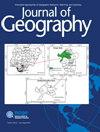IF 2.6
3区 地球科学
Q1 GEOGRAPHY
引用次数: 0
摘要
阿克塔斯湖是一个构造湖泊,总面积25.5平方公里(土耳其阿尔达汉11.7平方公里;格鲁吉亚13.8平方公里)。湖泊水质是保护湖泊生态特征和确保湖泊可持续利用的重要因素。本研究利用地理信息系统软件分析了可能导致湖泊水质和生态特征恶化的营养元素浓度的时空变化。在研究框架内,根据空间分析的间隔时间选择9个站点,于2014年6月、7月和8月采集了阿克塔斯湖的地表水样本。采集的样品测量温度、pH值、溶解氧、铵态氮、硝酸盐氮、亚硝酸盐氮和正磷酸盐。所得结果与中华人民共和国农林部《地表水水质管理条例》规定的浓度进行了比较。根据研究结果,阿克塔斯湖地表水的分类和分布包括氧、铵和硝态氮的I类(WS-I/天然)和亚硝酸盐的II类(WS-II/未开发)。根据与2004-2005年在阿克塔斯湖取样的研究进行的比较(Ozbay和Kilinc, 2008年),发现在过去十年中铵和磷酸盐水平显著增加。本文章由计算机程序翻译,如有差异,请以英文原文为准。
Aktaş Gölü (Ardahan) Yüzey Sularındaki Besleyici Elementlerin Yaz Dinamiklerinin Coğrafi Bilgi Sistemleri ile İncelenmesi
Lake Aktas is a tectonic lake with a total surface area of 25.5 km2 (11.7 km2 in Ardahan, Turkey; 13.8 km2 in Georgia). This study investigated water quality of the lake, a crucial element in protecting the ecological characteristics of a lake, and ensuring its sustainable use. The study involved use of Geographical Information Systems software to analyze the temporal and spatial changes in nutrient element concentrations that may deteriorate water quality and ecological characteristics of the lake. In the framework of the study, surface water samples were collected on the Lake Aktas in June, July, and August 2014 from nine stations selected at intervals in accordance with spatial analysis. The collected samples were measured for temperature, pH, dissolved oxygen, ammonium nitrogen, nitrate nitrogen, nitrite nitrogen, and orthophosphate. The obtained results were compared with the concentrations specified in Surface Water Quality Management Regulation published by the T. R. Ministry of Agriculture and Forestry. According to the findings, surface water classification and distribution for Lake Aktas included the following categories class I (WS-I/natural) in terms of oxygen, ammonium, and nitrate nitrogen, and class II (WS-II/undeveloped) in terms of nitrite. It was found that ammonium and phosphate levels have considerably increased in the last ten years, based on the comparisons made with the study sampled in Aktas Lake during 2004–2005 (Ozbay and Kilinc 2008).
求助全文
通过发布文献求助,成功后即可免费获取论文全文。
去求助
来源期刊

Journal of Geography
GEOGRAPHY-
CiteScore
4.90
自引率
6.50%
发文量
12
期刊介绍:
Journal of Geography is the journal of the National Council for Geographic Education. The Journal of Geography provides a forum to present innovative approaches to geography research, teaching, and learning. The Journal publishes articles on the results of research, instructional approaches, and book reviews.
 求助内容:
求助内容: 应助结果提醒方式:
应助结果提醒方式:


